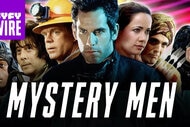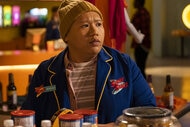Create a free profile to get unlimited access to exclusive videos, sweepstakes, and more!
SDCC 2019: Brian Henson on Jim Henson's life lessons
If you've ever seen Farscape, Dinosaurs, the original live-action Teenage Mutant Ninja Turtles or any of the fantastical projects produced by the Jim Henson company, you must appreciate the genius of Brian Henson.
Henson, who first collaborated with his visionary dad on Muppet movies, Labyrinth, Return to Oz and Little Shop of Horrors (among many other things), has directed, produced and been a star puppeteer and character voice on many of his own projects that have involved puppets and animatronics. You might also remember him as one of the judges on Jim Henson's Creature Shop Challenge on SYFY.
Taking a moment out of the epic con that is SDCC, Henson paused to chat with SYFY WIRE and reflect on how his dad's life lessons have carried over into his own life and work.
"His most universal message that is reflected in all of his work that I feel very strongly is one of the most basic truths in life is [to] love one another for your differences, not for your similarities," Henson said. "You don't want to work with people who look and think like you. Look for people who are very exotically different in the way in the way that they think."
Would Jim Henson ever have been wrong about something like this? Obviously not, because without a collaboration of vastly different and exotic minds, his legacy wouldn't have lived on in such incredible projects as Farscape and now, the upcoming Netflix series The Dark Crystal: Age of Resistance.
Farscape was Henson's first venture into sci-fi, on SYFY — Jim Henson got into the genre with Star Wars — and he remembered wanting to do something that was in the vein of Dinosaurs, the other show he was working on the time, but less "cartoony." What he gave us was a universe of strange life-forms and alien worlds that vast and often unreal but still surprisingly human.
Watch on to get Henson's own preview of The Dark Crystal: Age of Resistance!
This article was contributed to by Elizabeth Rayne.


























